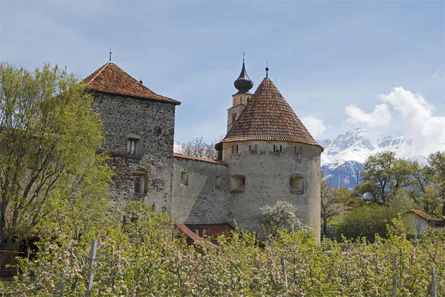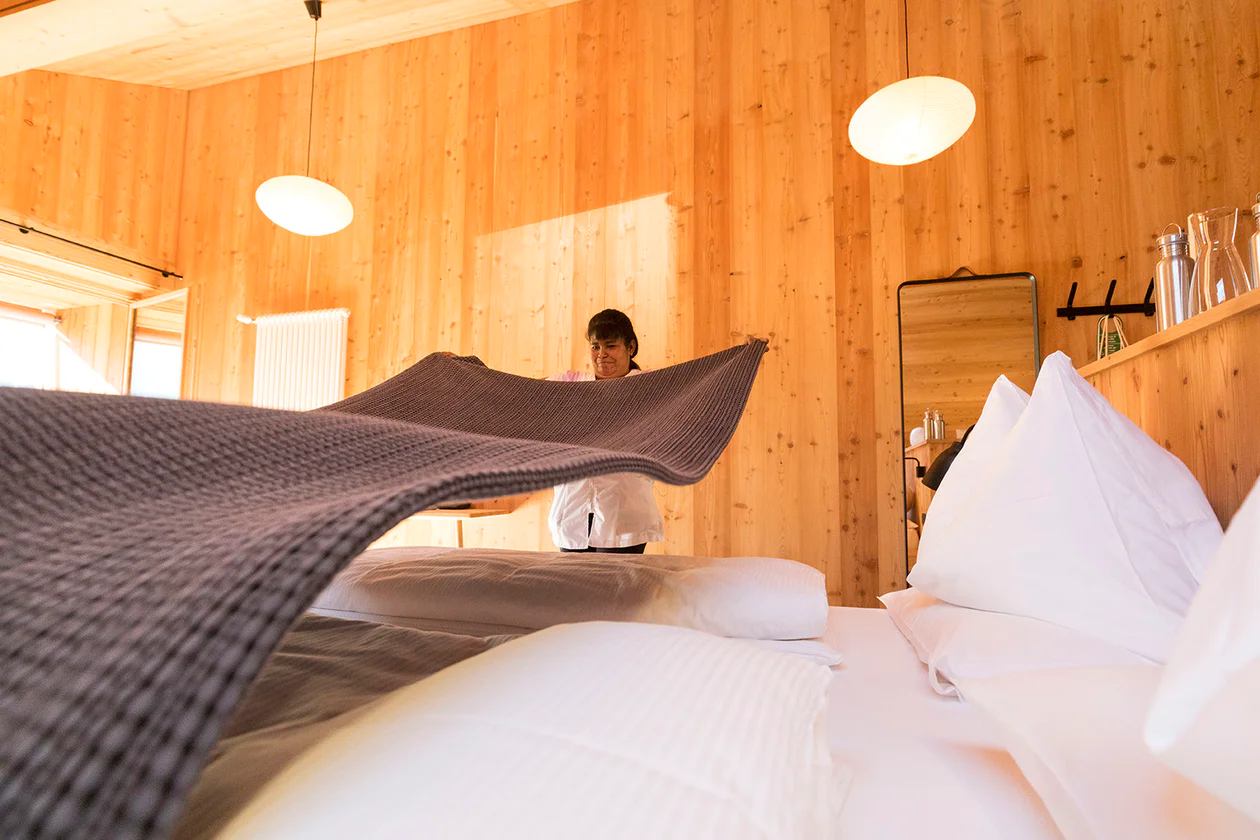From the village centre (town hall) via Church alley ‘Kirchgasse’ to the parish church of Saint Blaise. Walk under the church, then keep left to Turnauna irrigation channel path no. 8. After a few hundred metres along the irrigation channel path, the path to the cup stone branches off downhill (approx. 20 minutes from the town hall).
The prehistoric cup stone dates back to the Middle Neolithic period (approx. 4,500 - 3,000 BC) and is therefore one of the oldest monuments of mankind. The indentations in the stone are known as ‘ cups’. Researchers do not agree on the meaning of the cup stones. There are various assumptions:
1. The cup stone stored energy and served as a place of power. It was mainly used as a fertility symbol for ritual purposes. The cups were notched as thanks.
2. The cup stone was an astronomical calendar. At a certain distance, a wooden slat cast a shadow on the cups, indicating the right time for sowing and harvesting.
3. People or animals were killed on a lying cup stone and the blood that flowed out was soaked up in the cups and sacrificed to the gods.
The cup stone was found on 11 November 1988 during excavation work for irrigation pipes by Paul Hermann Vidal. In April 1989, Dr Lorenzo Dal Ri, then Director of the State Monuments Office, was able to prove the authenticity of the cup stone. In September 1990, Dr Sennhauser, an archaeologist from the monastery of St. Johann in Müstair, determined the age of the cup stone to be 4,500 BC (Neolithic period).





























